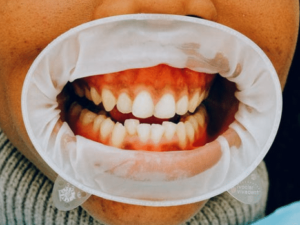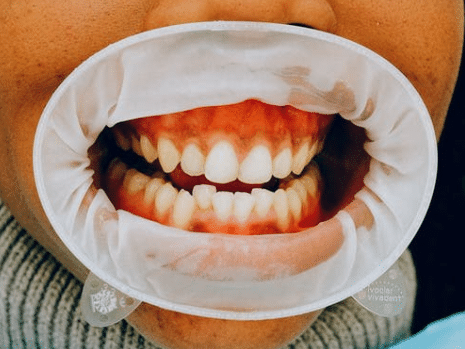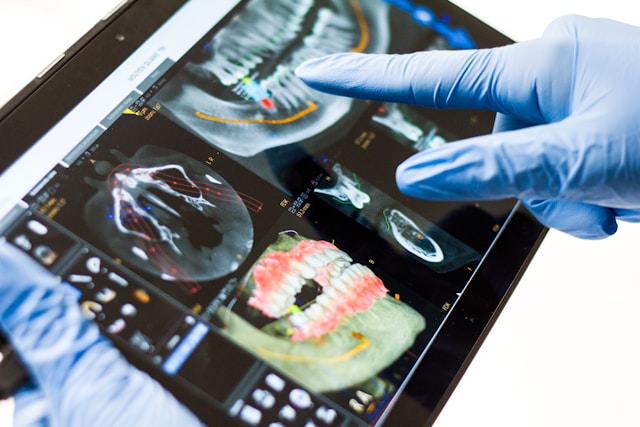You may love your crooked teeth and have no problems with your smile, and that’s perfectly okay. However, most people are constantly aiming to get that perfect Hollywood smile and associate a beautiful smile with straight, even teeth. But getting braces to fix your crooked teeth should be more than just about improving your appearance. It is about taking care of your oral health, which, in turn, affects your general health.

Causes for Crooked Teeth
Genetics:
Studies show that dental problems like crooked teeth and misalignment of jaws have a genetic link. If either of your parents had discrepancies in their jaw sizes or had crooked teeth, chances are, you’ll have them too.
Premature Loss of Baby Teeth:
Apart from helping them eat and talk, a child’s baby teeth are essential for the healthy development of their permanent teeth. Premature loss of baby teeth can cause adjacent teeth to drift into the space left behind by the missing teeth. This can lead to loss of space in the mouth and disrupt the eruption pattern of permanent teeth.
Poor Oral Habits During Childhood:
Habits like thumb-sucking, mouth-breathing, tongue-thrusting and prolonged use of pacifiers beyond the age of 4 years are associated with misalignment of permanent teeth and developmental problems of the jaw.
Poor Nutrition and Dental Care:
An unbalanced diet and inadequate maintenance of oral hygiene can lead to tooth decay and the development of gum disease. Over time, untreated dental problems can potentially lead to crooked teeth.
Changes in Diet:
From an anthropological point of view, our modern diet has changed to become softer and easier on our teeth. This new type of diet does not require as much chewing and as a result, our jaws have evolved to become smaller. Smaller jaws with no change in the size and number of teeth can be a potential cause for crooked teeth and other types of malocclusions.
Dental Concerns Associated with Crooked Teeth
Difficulty in Oral Hygiene Maintenance:
Proper cleaning of crooked teeth can be difficult. Despite regular brushing and flossing, food can remain lodged in between the nooks and crannies of crooked teeth, leading to plaque accumulation. People with crooked teeth are unable to properly remove plaque from their teeth, which puts them at an increased risk of gum disease. Crooked teeth also harbor bacteria, leading to bad breath and tooth decay.
Faster Wear & Tear of Teeth:
Crowded teeth in the upper and lower arch tend to rub against each other during chewing and talking actions. This can cause the tooth enamel to wear away and lead to decay and cracks in areas of excessive pressure.
Increased Risk of Injuries:
People with protruding front teeth are at an increased risk of damaging them in case of facial injuries and trauma. Also, crooked teeth put excessive strain on the jaw and its muscles, which can lead to increased chances of tooth fracture.
Jaw Misalignment:
Most people with crooked teeth also have a misaligned jaw, which is a common cause for bite problems. Issues with your bite can lead to difficulty while eating or even hinder proper closure of the mouth. The strain on your jaws can also lead to TMJ disorders and chronic headaches.
Self-Esteem Issues:
For individuals who associate beauty with straight teeth, having crooked teeth can severely hamper their self-esteem. Moreover, being constantly self-conscious about smiling and showing your teeth can affect your professional and personal life.
Poor Overall Health:
Problems that affect your oral health tend to affect your general health as well. Crooked teeth are linked to several dental problems, which if left unchecked, can contribute towards multiple general health issues like diabetes and heart disease.
How to Straighten Crooked Teeth?
Traditionally, braces have been the most common way to fix crooked teeth. Braces work best in children and teenagers since their jawbones are still developing and can be easily aligned with correct tooth positions. Depending on the complexity of the case and the type of results you expect, orthodontic treatments can take anywhere from 2-3 years.
The different types of orthodontic treatment options available today are –
Metal Braces:
These are the cheapest and most common type of braces used for teeth straightening. They are traditionally made of stainless steel and are highly effective in moving teeth into their proper positions. Their main drawback is their metallic appearance and the abrasive nature of their brackets and wires.
Lingual Braces:
Lingual braces are fixed on the back of the tooth. This makes them more discreet than traditional braces and hence, esthetically superior.
Ceramic Braces:
Ceramic braces have tooth-colored brackets that almost blend into the natural tooth appearance. They are not as strong as metal braces but have a better esthetic appearance, making them more popular among those conscious about their appearance with braces.
Invisalign:
These are the latest trend in orthodontic treatments and consist of clear, plastic aligners used for moving teeth. They are more expensive than braces but are far more convenient and comfortable as well. Unlike fixed braces, they are removable and have to be replaced with new aligners every few weeks as the teeth move into their new positions.
Retainers:
Retainers may be fixed or removable. They are usually given as a post-treatment measure after braces but may be used in place of braces as well for minor malocclusions.
Orthodontic Surgery:
Combining jaw surgery with orthodontic treatment is usually considered an extreme measure, but it can lessen the amount of time you need to wear braces. The surgery is aimed at the realignment of jaws and is usually done in patients whose bone growth is complete.
Veneers:
Veneers offer a shortcut to attaining the smile of your dreams, although it may cost you a fortune. Instead of going through a tedious orthodontic treatment, your smile can be transformed in a few sittings with the help of veneers. Ceramic tooth-shaped caps are placed onto the front surface of your teeth, which can completely transform the shade and appearance of crooked teeth.
When choosing to go for an orthodontic treatment, make sure you first get a thorough consultation with your dentist. Knowing the best type of treatment for you, the duration and the costs involved can set realistic expectations for yourself and help you make an informed decision. For more information about fixing crooked teeth, visit RiverRock Dental in Shakopee, MN.






